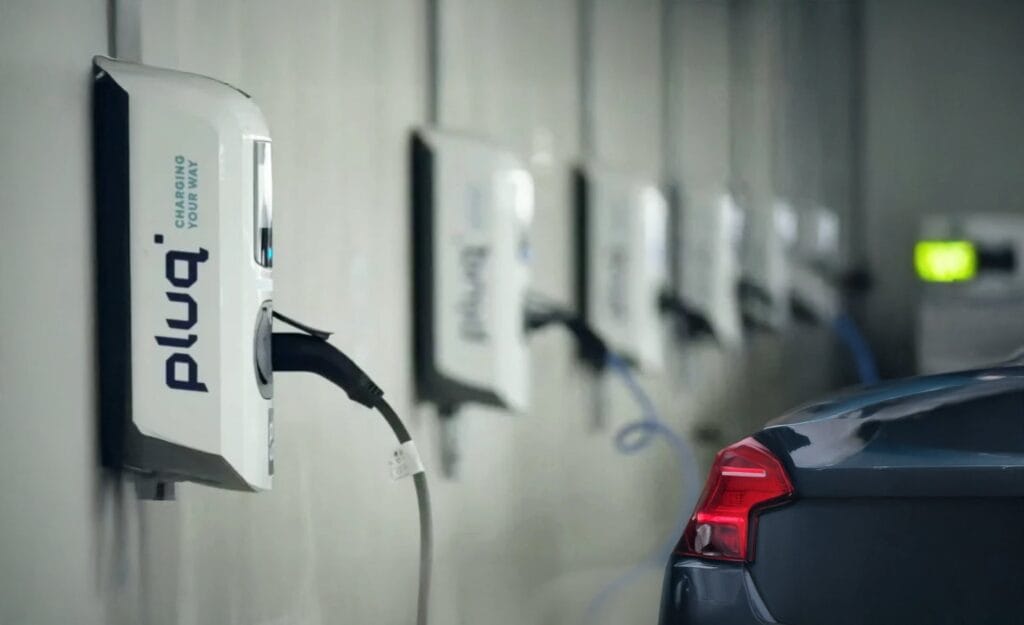When you manage or invest in property, decisions are never just technical. Every addition to your building, from a façade renovation to a new tenant or an energy upgrade, sends a message to the market. EV charging is one of those signals. It doesn’t only power cars; it shapes how people see your property and, by extension, how they see you as an entrepreneur.
Commercial real estate has always been a blend of numbers and narrative. Square meters and rental income matter, but perception often decides who leads and who follows. In a rapidly electrifying Europe, EV charging has become the new language of progress.
Charging as a Statement
When solar panels first appeared on rooftops, they weren’t about saving money. They were about showing intent, an outward sign that an owner was thinking ahead. EV charging carries that same symbolic weight today.
A row of sleek chargers in front of an office, hotel, or logistics hub communicates ambition. It tells the world: this property is ready for the future, and so is its owner. Investors and tenants notice it. Visitors remember it. Even competitors sense it.
Behavioral economists refer to this as signaling: visible actions that convey values, competence, and foresight. Offering EV charging doesn’t just reflect environmental awareness; it reflects strategic intelligence. It says you understand the direction of the market, and that you’re already moving with it.
Staying Ahead of the Curve

Entrepreneurs thrive on momentum. Yet one of the strongest motivators in business isn’t just the pursuit of growth — it’s the avoidance of falling behind.
In real estate, this plays out in quiet but powerful ways. The moment a nearby building installs EV chargers, your tenants notice. Your visitors notice. Suddenly, your property feels a little less current. The comparison happens automatically. You haven’t lost a tenant yet, but the perception shifts.
Once that happens, catching up becomes harder. Tenants start to associate charging availability with quality. That’s when you realize that offering charging is about maintaining competitive relevance.
Recognition That Matters
Every entrepreneur values recognition; the sense that their decisions are noticed and respected. Installing EV chargers tangibly delivers that recognition. It shows that you’re not only keeping pace with regulations; you’re helping define what modern business looks like.
It also changes how partners and peers see you. You stop being just a landlord or facility operator. You become part of the group shaping Europe’s new energy infrastructure. That transformation strengthens your brand and your confidence as a forward-thinking investor.
With Charging as a Service, this recognition comes without financial hesitation. Pluq installs and operates the chargers entirely at its own cost, while you retain ownership of the opportunity and share in the revenue. With one signature, your property steps into the next phase of mobility.
The Power of Visibility

Some improvements, such as insulation, smart meters, and efficient boilers, remain invisible. They save energy but rarely draw attention. EV chargers are different. They are highly visible. They stand where everyone can see them: entrances, parking lots, forecourts.
That visibility changes how people experience your site. Guests may not know your energy label, but they instantly notice the chargers. Tenants see them as proof that the property is well-managed, relevant, and aligned with sustainability goals.
Visibility amplifies perception. It transforms technical progress into reputation.
From Compliance to Leadership
For years, sustainability measures were framed as obligations — things you had to do to comply with regulations. But successful entrepreneurs rarely act out of obligation. They act out of ambition.
EV charging allows that shift. Yes, European directives such as the EPBD IV require charging infrastructure in new and renovated buildings. However, the most ambitious owners don’t install chargers because they have to; they do it because they want to lead.
Leadership has its own return on investment. It attracts better tenants, strengthens relationships with investors, and positions your portfolio as resilient and future-ready.
Proof That the Market Is Moving
Across Europe, the trend is visible. Offices, hotels, and retail destinations are adding EV charging to their value proposition. Every new site raises expectations for the next. This is the dynamic of social proof, when people act because others are already doing so.
As the network grows, hesitation decreases. If peers are installing chargers, it confirms that the market is shifting in one clear direction. For ambitious property owners, that’s the moment to act decisively and claim leadership while others are still catching up.
Overcoming the Bias to Wait
Entrepreneurs often weigh immediate costs more heavily than future gains. Economists call it present bias. It’s why some owners hesitate to install chargers: the benefits feel distant, while the expense feels immediate.
The Charging as a Service model neutralizes that bias. With no upfront cost, the decision becomes effortless. The moment the chargers are installed, your site looks and feels more modern. Tenants appreciate the upgrade, and your property’s value benefits immediately.
The financial logic remains sound — you share in the revenue without carrying risk, but the psychological benefit is immediate. You see progress now, not someday.
Charging as Identity

Entrepreneurship is deeply tied to identity. Every decision you make tells the market who you are. For modern property owners, EV charging is an integral part of their identity.
Offering charging affirms the self-image many entrepreneurs aspire to:
- Innovative rather than conventional.
- Strategic rather than reactive.
- Leading rather than following.
This alignment between self-perception and public perception is what makes the choice so satisfying. You’re not just adapting to change; you’re embodying it.
Real-World Momentum
Data from across Pluq’s network shows that adoption grows naturally once the first chargers go live. Usage climbs, visibility increases, and expansion follows. EV charging is becoming part of a broader energy ecosystem. Smart load balancing distributes available power efficiently. Renewable sources, such as solar energy, can be directly integrated into the charging network. This integration supports ESG reporting, strengthens investor confidence, and contributes to a resilient, low-carbon portfolio.
For entrepreneurs who think long-term, it’s an elegant way to combine profit with purpose. Read here how Obligations can become opportunities.
The Psychology of Being Ahead
Owning and operating property is, at its core, an exercise in foresight. Every decision you make today shapes how your assets are perceived tomorrow. EV charging embodies that principle perfectly.
It represents initiative, confidence, and leadership, the qualities that distinguish true entrepreneurs from passive landlords.
Forward-thinking owners understand this. They don’t wait for regulations or competitors to dictate the pace. They act now because perception creates value, and leadership compounds it.
In real estate, the future doesn’t reward those who follow trends. It rewards those who create them.

